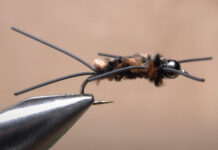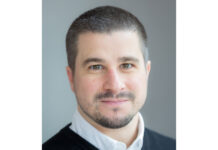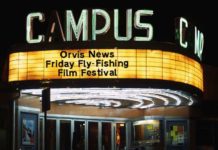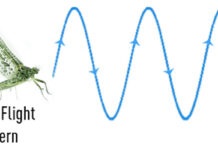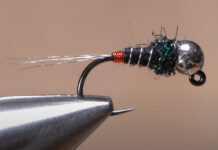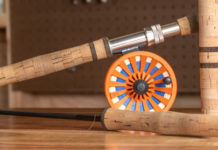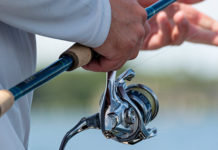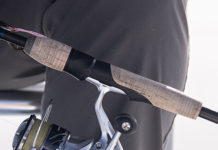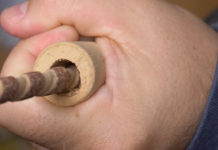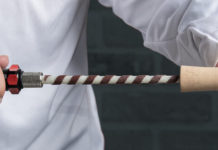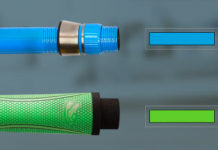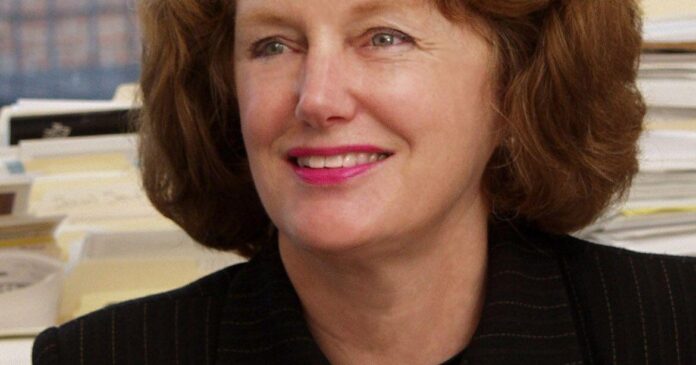Roughly 100 million Americans live in areas without enough primary care doctors. Nationwide, we’re short about 17,000 of them right now. By 2034, that number could jump to 48,000, according to the Association of American Medical Colleges.
To meet our country’s growing demand for care, we need to increase the supply of clinicians who can provide it. But that doesn’t mean just training more doctors. In fact, nurse practitioners and physician assistants could be delivering much more primary care but are prevented from doing so by government rules. We need to strip away this red tape that keeps patients underserved.
Nurse practitioners, for example, are highly trained. They typically hold master’s degrees and sometimes doctorates, as well as specialist training. They’re qualified to diagnose and treat patients, including prescribing medication.
People are also reading…
Physician assistants, meanwhile, hold master’s degrees and are trained in general medicine. They likewise can diagnose and treat.
But in many cases, state-based “scope-of-practice” laws tie these professionals’ hands. Twenty-four states limit or restrict the ability of nurse practitioners to engage in at least one aspect of practice for which they’re qualified, such as prescribing certain types of medication or seeing patients without physician oversight. Similar restrictions exist for physician assistants.
And yet, there appears to be little to no medical or scientific basis for these rules. A study by researchers at Brandeis found that state regulations restricting nurse practitioners’ scope of practice did not improve quality of care. Participants in one survey of community clinics even reported higher satisfaction with nurse practitioners than with physicians.
Numerous studies show that physician assistants deliver the same or better patient outcomes as physicians.
Patients don’t benefit from scope-of-practice laws, nor do they seem to like them. More than three-fourths of Americans support “expanded capabilities” for nurse practitioners, according to a recent Morning Consult poll.
In short, these laws squeeze the supply of care for no reason. Allowing nurse practitioners to work without restriction would reduce the number of Americans living in counties with primary-care shortages from 44 million to fewer than 13 million — a drop of 70% — according to a report by UnitedHealth Group.
Fortunately, Congress is considering bipartisan legislation that would remove barriers in the Medicare and Medicaid systems that prevent nurse practitioners and other advanced-practice registered nurses from practicing to the full extent of their training.
We need similar rollbacks that apply to the private market and at the state level.
There are other ways legislators can increase the supply of care — and thereby expand access to it. During the pandemic, Congress lifted restrictions on telehealth, allowing many more patients to see providers by phone or video chat. More than eight in 10 voters with employer-provided coverage would now like to see those telehealth flexibilities extended, according to another survey by Morning Consult.
Lawmakers should also consider relaxing restrictions on physicians educated abroad. Doctors with degrees from international medical schools provide excellent care, the data show. In fact, according to a recent BMJ study, Medicare patients treated by international medical graduates had lower mortality rates than patients treated by U.S. medical school graduates.
Too often physicians trained in other countries must jump through hoops to practice in the United States. Many international medical graduates have to complete an accredited residency training program in the United States or Canada even after practicing unencumbered elsewhere. Re-licensing procedures can take four to five years.
Hurdles like these leave talent untapped. An estimated 270,000 immigrants with medical or health degrees are underemployed or unemployed in the United States, according to the Migration Policy Institute.
With our growing and aging population, there’s no way demand for health care services is going to shrink. That means we have to find ways to increase supply. Measures that deregulate the health care labor market would be a step in the right direction.
From the Archives: Mayo Island through the years

Mayo Bridge and Island

Aerial photos Richmond area, including Main Street Station, Interstate 95, Shockoe Bottom, Downtown, Mayo Island, Church hill

Birds fly over Mayo Island in the James River on February 13th, 2008

Mayo Island in the James River, from the Flood Wall on the south bank of the river.

In July 1940, a Richmond Colts batter headed to first base while a teammate scored in a victory over the Norfolk Tars in a Piedmont League game at Tate Field, which was on Mayo Island in Richmond.

4-27-1937: During the 1937 flood, the old ball park on Mayo Island looked like a lake.

This January 1931 image shows Tate Field, located on Mayo Island in the James River and used for several Richmond baseball teams from 1890 to 1941. The ballpark, named for 1880s local player Edward “Pop” Tate, had recurring problems with flooding, and a fire caused significant damage in 1941.

10-18-1942 (cutline): Flood waters from James River pour over old Mayo Island Baseball Park just off of Fourteenth Street Bridge. Picture taken from atop Richmond Boast Club building shows bleachers isolated by water.

John Jay Schwartz, on the 14th Street Bridge, is a Richmond broker who has Mayo Island as one of his listings. Part of Mayo Island is the wooded area behind him. Aug. 14, 2014.

A helicopter lowers a briefcase on Mayo Island Saturday, July 12, 1997, during the celebrations prior to the start of the Peace Frog Race. The briefcase contained destination check points for the race.

This historical photo of the baseball diamond that existed on Mayo Island in Richmond, VA, was made by Dementi Studio. (No date information for this photo was given.)

Sarah Dingle and Matt Dingle compete in the 2X14DR class of the Downriver Competition in the 1998 Open Canoe Downriver and Slalom National Championships Friday, June 19, 1998. They paddle through waterpipe rapid nearing Mayo Island.

Jen Watkins and Rob Scharges compete in the 2X14DR class of the Downriver Competition in the 1998 Open Canoe Downriver and Slalom National Championships Friday, June 19, 1998. They paddle through waterpipe rapid nearing Mayo Island.

Audience members sing along with songs at Carbon Leaf’s Endless Summer Luau and Campout on Mayo Island on 7/20/02. (Carbon Leaf on stage)

Backstage view of Carbon Leaf at Carbon Leaf’s Endless Summer Luau and Campout on Mayo Island on 7/20/02.

Donna Shell, with the National Environmental Trust, wore her global hat created by Ignatius Hats Saturday, April 19, 1998, for the Earth Day concert at Mayo Island. She was getting people to sign postcards to their senators to combat global warming.

Lisa Winnagle shakes a rattle to the beat of Baaba Seth’ music Saturday, April 19, 1998, at the Earth Day concert at Mayo Island.

Michelle Hand and Chris Hunter, both of Augusta, dance to the beat of Baaba Seth’ music Saturday, April 19, 1998, at the Earth Day concert at Mayo Island.

Large crowd gathers on Mayo Island to celebrate Earth Day.

Richmond fire officials have not determined the cause of the blaze at the paper warehouse, 508 S. 14th St. on Mayo’s Island. April 3, 1989.

Ahnna Rinaldi, 10 of Sandston, holds at red rat snake (also known as a corn snake) during the Fish Festival now incorporated into the Earth Day festivities on Mayo Island on April 19, 2008. In background is naturalist Ralph White.

Jayden Tatum, 4 of Baltimore, gets some help from his dad while learning to fish at the James River during the Fish Festival now incorporated into the Earth Day festivities on Mayo Island on April 19, 2008.

Watched by Orvis’ Dale Huggins, Quraan Randolph, 7 of Baltimore learns to fly cast during the Fish Festival now incorporated into the Earth Day festivities on Mayo Island on April 19, 2008.

James “Tony” Borst has lived on the small islands near the Mayo bridge and downtown Richmond on and off for the past 20 years. Here, Borst is seen on Devil’s Kitchen Island with a view of downtown Richmond in the background.

Joseph “J.D.” Osborne has lived on the islands in the James River near the Mayo bridge and downtown Richmond on and off for over 10 years. Here, Osborne, originally from Mecklenburg, Va., relaxes near his campsite on May 29, 2009.

With fly rod in hand, Dale Huggins discusses shad fishing strategy on the James River near Mayo Island. The Hickory shad, and to a lesser extent the American shad, have begun their annual run upstream to spawn.

Mayo Island

Young people listen to the music of Everlast at Mayo Island in Richmond Aug.14, 1999

Michael Tobin , men’ s XTERRA winner crosses the finish line at Mayo’s Island . July 18,1999
Sally C. Pipes is president, CEO and Thomas W. Smith Fellow in Health Care Policy at the Pacific Research Institute. Her latest book is “False Premise, False Promise: The Disastrous Reality of Medicare for All.” Follow her on Twitter @sallypipes.
Credit: Source link


